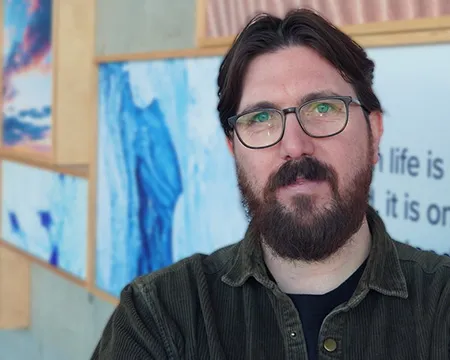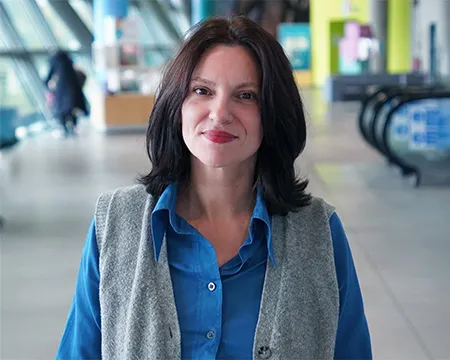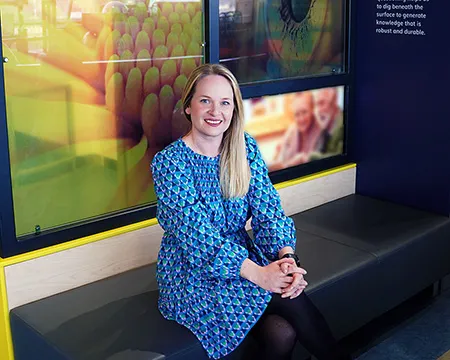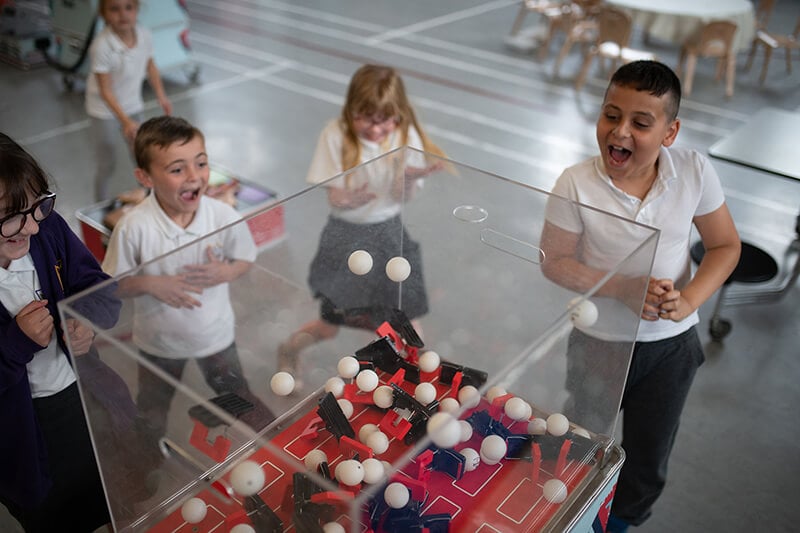The Changing Arctic
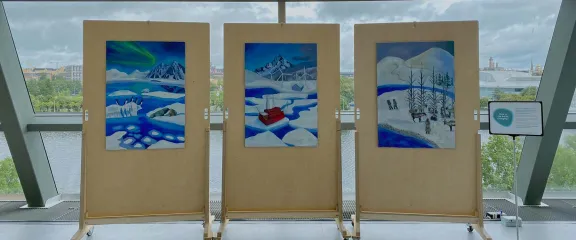
Climate change is rapidly eroding a crucial feature of our planet. Earth’s frozen regions - our polar ice, glaciers, areas of snow and permafrost – are melting at a faster rate than scientists expected.
These icy areas are vital to life on Earth. Together with the oceans they regulate our planet’s temperature. They are home to millions of people whose livelihoods depend on the ice. They sustain thousands of species of animals and plants and they are a source of food that is traded across the world.
Science-Art Collaboration Shows Impacts of A Warming Planet
It is in the Arctic regions that these rapid changes are having the biggest impact, and this is the focus of a new painting on display at Glasgow Science Centre. The artwork is a collaboration between ocean scientist, Dr Sian Henley, based at the University of Edinburgh, and Laura Johnson, an artist, teacher and social scientist.
The painting depicts the environmental, industrial and social issues in the Arctic that are due to climate change. It aims to open up conversations on the impacts of a warming planet, and how we live and interact with nature.
Henley and Johnson saw the opportunity for close collaboration between the arts and sciences as an inspiring way to highlight the urgent changes needed to protect the fragile polar regions.
Dramatic Changes In The Arctic
Each year, some of the Arctic sea ice melts in summer, then expands again over the colder winter months. But in response to the planet’s warming temperatures, Arctic sea ice is melting more rapidly each time. The layer of summertime sea ice has already shrunk by about 40 per cent since satellite records began in the late 1970s. It is expected to vanish entirely by 2050. Some predictions suggest it could happen in less than 15 years’ time.
This dramatic melting is something Henley has witnessed during her research work in the Arctic: “Going there really changes the way you think about everything,” she says. “It's strikingly beautiful. It's breath-taking. But it's also very clear how fragile it is when you see vast sheets of sea ice crack into tiny pieces, or the fronts of glaciers crumbling into the sea.”
Henley, whose research focuses on the way the polar oceans and ecosystems are changing in response to climate change, continues: “I found it hugely inspiring in terms of wanting to know more, wanting to help protect these incredible systems. But it's also pretty scary and pretty humbling to see the vastness of the Arctic sea ice, and to think that in a matter of a few decades, we may no longer have that in summer.”
Sea Ice Is Important To Life
Why is that sea ice so important to life on Earth? We rely on it to help keep global temperatures in check. The sea ice is highly reflective and helps prevent sunshine being absorbed by the ocean, causing further warming of the Earth. Without it, we risk accelerating the rise in global temperatures.
Losing that protective cover will impact the entire Arctic ecosystem, from algae and fish that need dark waters and less sunlight exposure, to animals that rely on the ice to survive, like seals, polar bears and walruses.
Endangering these species also impacts the Arctic communities who depend on them for food, putting pressure on their traditional ways of living. Reduced sea ice cover also means less protection from storms and increased risk of coastal erosion.
Henley is aware of the vulnerability of these regions: “I focus on the environmental changes, but there are many industrial and economic changes, and the indigenous communities who live in the Arctic are really on the front line of climate change, without really having done anything to contribute to it, or to benefit from the activities that have driven it, like we in the further southerly latitudes have done.”
She believes that artists have a vital role to play in tackling climate change: “One of the things I care most about, is that people understand how important the polar regions are, and the oceans are, in terms of supporting life on planet Earth and therefore human survival.”
“I think only by working effectively between science and the arts can we really deliver that message. Bringing together the natural sciences, the social sciences and the arts in a way that people can understand and reach and engage with, is critically important.”
Further Information
This blog post by Yvonne Slater is adapted from an article from Glasgow Science Centre that first appeared in Glasgow Times in December 2022.
Arctic Changes
To see the art installation visit Glasgow Science Centre's Our World, Our Impact gallery, or find out more on the website.

